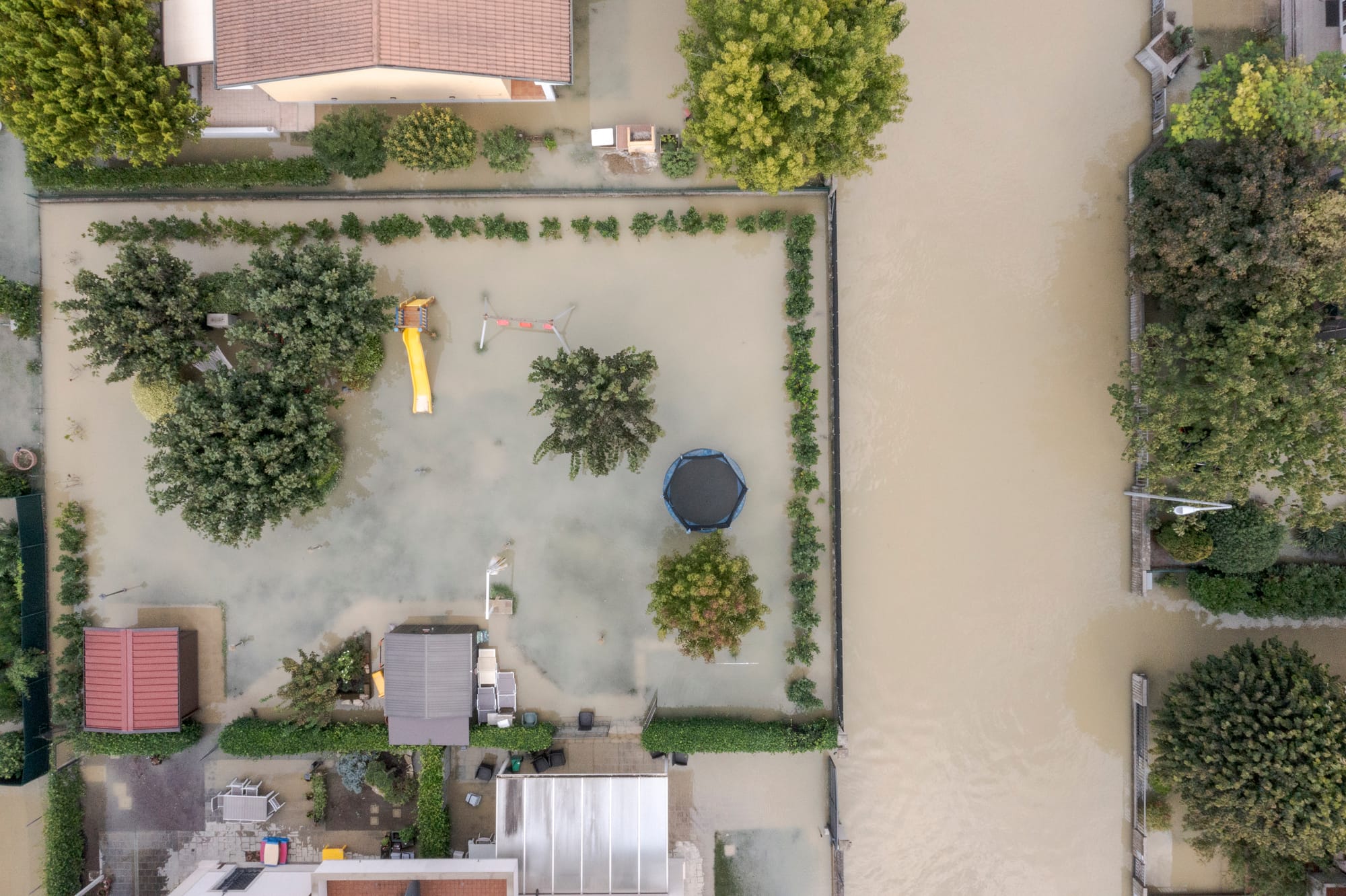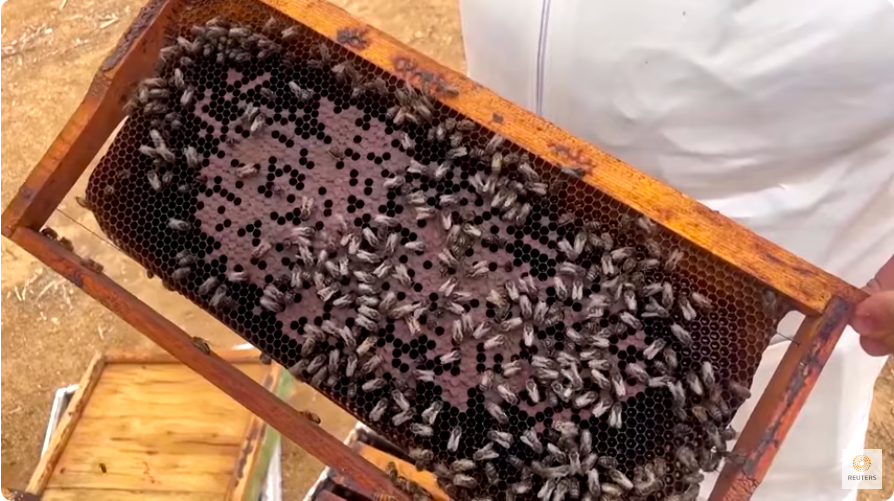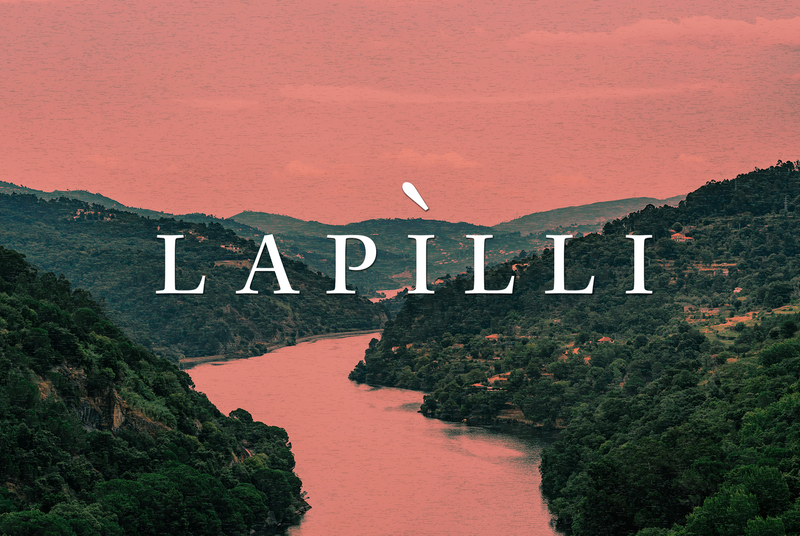In this Lapilli we discuss wildfires in Portugal and floods in Central Europe, two events seemingly different that are connected by climate change. We then examine Marine Protected Areas in the Med that are not as protected as they should be and a die-off of mussels in Greece probably owing to the high sea temperatures this summer. But, as usual, there is some more comforting news too. Despite various challenges, sea turtles have hatched across the Mediterranean! We hope you’ll enjoy, feel inspired, and forward Lapilli to anyone you know who has a passion for this region.

Wildfires in Portugal, floods in Central Europe. In mid-September, Portugal experienced some of the largest and most devastating wildfires in recent years. They lasted for days and resulted in the deaths of at least nine people. The firefront was so vast that it required the help of firefighting planes from neighboring Spain and other Mediterranean countries, including Italy and Morocco.
Copernicus, the European Union’s Earth observation program, released satellite images that show the devastating extent of the fires and an animation highlighting the amount of carbon dioxide released into the atmosphere during these events.
And, while large parts of Portugal were burning, in Central Europe — Austria, Slovakia, and the Czech Republic, as well as Northeastern Italy — it was massive amounts of rain that caused disruption and fatalities. Emilia-Romagna in Northern Italy was hit especially hard with heavy rains that caused rivers to overflow and floods, only a year and a half after the last flooding event of 2023. In Faenza, halfway between Bologna and Rimini, a neighborhood that had a protective wall built to prevent the flooding it experienced a year ago was once again underwater (Il Post).
According to data from the local environmental protection agency, cumulative rainfall in some areas reached between 200 and 300 millimeters (8 and 12 inches) in just 48 hours, more than it was recorded individually for the two May 2023 flooding events. In this article, journalist Alice Facchini reports on the anger and despair of residents in the hardest-hit areas.

The European Commissioner for Crisis Management and Humanitarian Aid reiterated that the record wildfires in Portugal and the catastrophic floods in Central Europe are "evidence of a climate breakdown," where extreme events are becoming increasingly extreme, especially in Europe, the fastest-warming continent in the world. Even attribution science initiatives, like World Weather Attribution and ClimaMeter, have pointed out that human-induced climate change has contributed to making the effects of the storm that caused the devastating flooding in Central Europe and Emilia-Romagna more likely and catastrophic (IconaClima).
Melting glaciers call borders into question. The melting of Alpine glaciers beneath the Matterhorn has led Italy and Switzerland to sit down to redefine the borders between the two countries. Such melting in the Plateau Rosa region has caused natural boundaries, like the glacier ridgelines or areas of perpetual snow, to shift. Watersheds have been used since Roman times to define the borders between two territories divided by a mountain range but lately global warming has significantly altered such formations (The Guardian).

Disputed waters. Spain and Portugal might have recently cooperated to extinguish wildfires (see above), but aren’t as successful when it comes to managing shared water resources. The two Iberian Peninsula countries have always had a unique relationship. Neighbors by nature, they fought wars for centuries — the fortifications they built along the border are impressive. Today, relations are certainly more friendly, but as highlighted in a recent investigation funded by Journalismfund and published in various media outlets, in recent years, tensions have emerged over shared water management, exacerbated by increasingly frequent drought conditions.
The two countries share, among others, three of the largest rivers on the Iberian Peninsula: the Tagus, the Douro, and the Guadiana, which originate in Spain and flow into Portugal’s coastlines. For the past 25 years, the management of shared water has been regulated by the Albufeira Convention, but as drought conditions worsen, so do tensions over how to regulate river flows — specifically how much water to retain and how much to release.

Struggling mussel farmers. In the last Lapilli, we have already briefly mentioned the devastating consequences of the extreme sea temperatures recorded between July and August in the Mediterranean Sea on marine life, focusing specifically on wild mussels along the Italian coast of the Adriatic Sea (Ansa). But a recent article published in the Greek newspaper Kathimerini, accompanied by photos by Alexandros Avramidis, reports that a similar occurrence also took place in Greece. In Pieria, in the Thermaic Gulf on the Aegean, not far from Thessaloniki, mussel farmers have suffered severe losses related to a combination of high temperatures, polluted rivers, and probable low levels of dissolved oxygen in the water. Analysis to ascertain the exact causes of the die-off is ongoing. Yet, according to the article, about 80 percent of this year's harvest was lost. “We had high temperatures in the surface layers of the water again, exceeding 30 and 31 degrees Celsius (86 and 88 degrees Fahrenheit) in the first 5 to 10 meters (16 to 33 feet) of the water column,” said Konstantinos Koukaras, a biologist and postdoctoral researcher at the Institute of Applied Biosciences at the Hellas Center for Research and Technology, to Kathimerini. “As a result, organisms in the top 10-15 meters (33 to 49 feet), whether along the shoreline or attached to mussel farms, experienced mass die-offs.” A similar episode had happened in 2021. In Pieria, mussel farming employs 800 people (and about 300 families), who now fear for next year's harvest. Possible compensation remains uncertain. “Until recently, the European Union did not recognize increased temperatures as a phenomenon warranting compensation, considering it an extreme natural event,” Koukaras told Kathimerini.
Sea turtles expand to the west. In recent years, climate change might have pushed loggerhead sea turtles (Caretta caretta) to explore new nesting habitats. Last summer, the beach of Laigueglia, in Liguria, Italy, experienced an extraordinary event: the birth of 92 hatchlings — a rare phenomenon as these turtles usually nest on more southeastern coasts. This increase in nesting, already underway since 2013 in regions such as Tuscany and Liguria, could be a sign that rising temperatures are prompting turtles to seek new suitable locations for laying their eggs. A recent study has shown that the nesting center of Caretta caretta has shifted westward, moving from the Aegean Sea to Sicily. Other species, such as the green turtle (Chelonia mydas), are also exploring new areas: In July 2024, a group of World Wildlife Fund (WWF) volunteers spotted one of these turtles attempting to nest in Calabria, a behavior never before observed in Italy (Il Post).

Conservation efforts that pay off. In recent years, loggerhead sea turtles have also been showing signs of recovery in some areas of the Mediterranean. Greece, for instance, a traditional habitat for Caretta caretta, has seen a significant increase in the number of nests: Since 2023, the number of annual nests have risen from an average between 5,000 and 7,000 to more than 10,000, according to Archelon, the Sea Turtle Protection Society of Greece. Despite this success, the country faces new threats, including climate change, overfishing, pollution and mass tourism (The Guardian).
Lebanon is facing additional challenges related to the conflict with neighboring Israel. The beaches of Al-Mansouri, in the south of the country, are crucial nesting grounds for sea turtles. Despite the ongoing war, this year 2,500 hatchlings managed to reach the Mediterranean sea thanks to the efforts of a volunteer group that has been protecting the beach for two decades. Despite the difficulties posed by the conflict, the team managed to monitor and protect 51 nests, representing a form of resistance to safeguard Lebanon’s natural wildlife in times of war (Mongabay).

(Poorly) protected marine areas. Still on issues related to our sea, a recent study published in the scientific journal One Earth states that 86 percent of the areas which on paper are protected are not compatible with conservation objectives because they allow industrial or otherwise environmentally harmful activities within their perimeter. The study reviews 4,858 marine protected areas within the European Union, with roughly 1,571 marine protected areas within the Mediterranean. The work done by the group of mostly European researchers shows that Germany stands out for its coverage, which is the percentage of its waters that it has dedicated as marine sanctuaries, followed by France and Belgium. The Baltic Sea emerges as the most protected body of water in Europe (with 16.8 percent coverage, 3 percent of which are highly protected). Next is the Mediterranean. Here, marine protected areas cover about 14.8 percent of the surface area, but only 1.9 percent of them benefit from strict protection. The study points out that these numbers are still a long way from the goal that the European Union has committed to of protecting 30 percent of our seas — 10 percent strictly — by 2030 (The Guardian).
From Mediterranean climate to steppe. During the recent International Meteorology Congress of the European Meteorological Society, held in early September in Barcelona, a team of Spanish researchers offered a quite disheartening not-so-distant scenario for the Iberian-Balearic region. The title of their presentation was “Spain: toward a drier and warmer climate.” Analyzing the evolution of temperatures and precipitation recorded between 1971 and 2022 and looking at projections up to 2050, the researchers argued that we are going through a very significant change in the region's climate in a relatively short time-frame. Their results speak of a clear shift from a Mediterranean climate to a drier climate typical of steppes or desert regions, mostly due to decreased precipitation (Euronews Green).

Dwindling bees. Tunisian bees are feeling the strain of climate change and honey production is suffering with them. According to Reuters, beekeepers are raising the alarm. As temperatures rise and droughts persist, concerns are mounting that climate change is threatening both bee populations and honey production nationwide. In the northeastern region of Zaghouan, about 30 miles from Tunis, many beekeepers are facing increasingly harsh conditions. Where rainfall used to be more frequent and the climate more favorable, the past five years of drought have significantly hindered bee reproduction, disrupting the entire chain. Reuters reports that data from the Tunisian Ministry of Agriculture highlights the gravity of the situation: In 2023, 75 percent of beekeepers saw a substantial drop in honey production. The economic impact is clear: reduced production, coupled with rising costs, has driven up consumer prices, while beekeepers' incomes have dwindled. This trend could have even wider repercussions, affecting not just the local economy but also the country's food supply and agricultural sectors (Reuters).


MAGMA
At Magma, we are committed to reporting on the ways climate change is transforming the Mediterranean region. We currently do so mostly through Lapilli, a monthly newsletter written in Italian and English, that has a free and premium version. Find out who we are and read our manifesto.That's it for this month. Thank you for reading this far. See you in November or earlier with Lapilli+.
If this newsletter was forwarded to you, you can subscribe here to continue receiving it. Lapilli is free and always will be, but in case you would like to buy us a coffee or make a small donation, you can do so here. Thank you!
Lapilli is the newsletter that collects monthly news and insights on the environment and the Mediterranean, seen in the media and selected by Magma.

